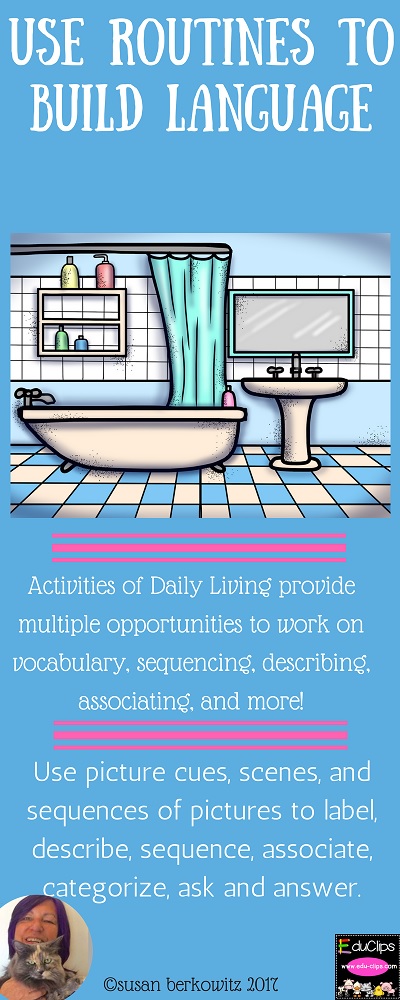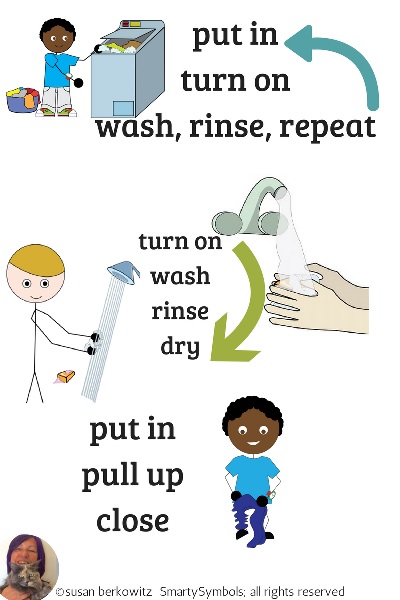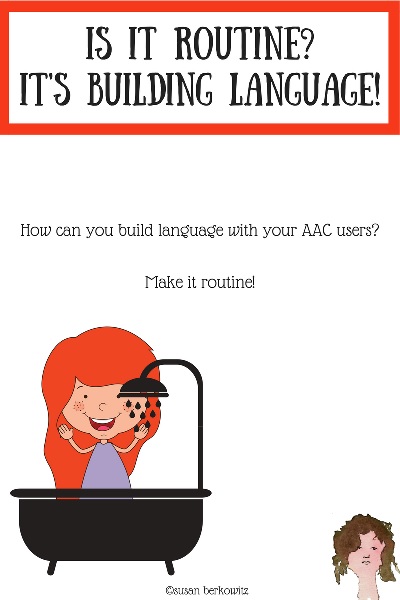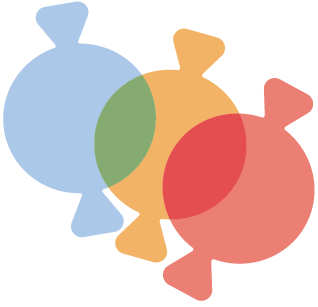It's NOT 'Just Routine'
by Susan Berkowitz
One of the best - and most often overlooked - times to explicitly build language skills is in the context of daily routines. I will often hear parents, teachers, and clinicians alike dismiss routine daily living activities as being unrelated to language; except maybe when the child needs to ask for something during the activity.
But routines are at the heart of symbol and language development.
.

Routines are sequences of actions or events that are repeated over and over again. Always in the same sequence. Routines are reliable, consistent, constant, and repetitious frameworks that give us the opportunity to provide consistent language targets.
Routines identify predictable vocabulary and activities that use the same context specific vocabulary consistently. They also identify consistent core vocabulary. Routines, in short, provide a consistent schedule of multiple opportunities to learn communication.
Every routine can be broken down into smaller and smaller components. Each of these components is influenced by the responses and reactions of those involved. The reactions and responses become symbols that are used in this interaction to signal to each other. [Remember, symbols are signals that are interpreted the same way by at least 2 people.]
When the routine always follows the same sequence, the signals between the two people involved become shared symbols. Routines help us build symbolic awareness, and symbols become communicative when they come to have a more standardized or conventional meaning among a larger group.
There are many routine opportunities throughout the day at home as well as in school. Children learn through these how their world is organized, what words you use in relation to each activity, how to respond to and participate with you during consistent activities.

They learn the meaning of words. If you talk about what you are doing during the activity, the child learns meaning. But consistent repetition is required. And so is motivation. The child has to be motivated to use the words you are using.
This helps us realize why it is important to develop routines in thinking about intervention for AAC (Lonke, 2014) and for understanding the impact of aided language stimulation.
“The average 18-month-old child has been exposed to 4,380 hours of oral language at the rate of 8 hours/day from birth. A child who has a communication system and receives speech/language therapy two times per week for 20-30 minute sessions will reach this same amount of language exposure in 84 years.” (Jane Korsten).
Hart and Risely (1995) found that typical children in working-class families hear approximately 1,250 words per hour and accumulate a listening vocabulary of 6 million words by the time they are 3 years old. Miranda (2008) then posited that children with ASD who are using AAC need to be presented with, literally, hundreds of opportunities to have symbol use modeled throughout the day.
Routines offer the repetition needed to build language skills. You should:
.
-
Break routines into a series of small steps that happen in the same way and the same order each time, while saying the same thing(s) each time
-
Follow the child’s lead and, if necessary, negotiate; offer the opportunity to do what he wants after he’s done what’s needed in the routine
-
Label items and actions he attends to as soon as he attends to them so that he learns the vocabulary
-
Create routines out of any activity that you do regularly; you do not need any special toys or equipment to build your child’s language
-
Routines can be created around cleaning the room or house, taking a bath, getting dressed, preparing a meal or snack, reading a book, going to bed, brushing teeth, washing the dishes, and more.
-
Use concise, simple language (“Up. Pull up pants.”)
-
Prepare the child verbally (“It’s bed time. Put on pajamas.”)
-
Narrate what you’re doing (verbal referencing; say, “It’s time to brush your teeth,” while getting out the toothbrush and toothpaste)
-
Name each object or action as you do it or just do it the first time if there are multiple identical items; (You might say “Get forks” but not name the fork each time you get one of them to set the table once)
-
Encourage the child to respond with simple questions (“Where are the pajamas?”)
-
Give your child the chance to make choices when appropriate and possible (“Which pajamas do you want to wear?”)

Cited Sources
.
Goosens, C., Crain, S., & Elder, P. (1992). Engineering the preschool environment of interactive, symbolic communication. Southeast Augmentative Communication Conference Publications. Birmingham, AL.
Hart, B. and Risely, T. (1995) Meaningful Differences in the Everyday Experience of Young American Children. Brookes Publishing, 1995
Lonke, F. Augmentative and Alternative Communication: Models and Applications for Educators, Speech-language Pathologists Plural Publishing. 2014
Smarty Symbols; all rights reserved worldwide
